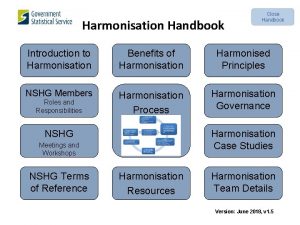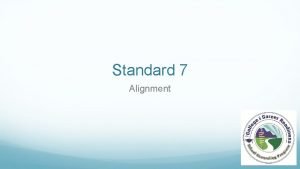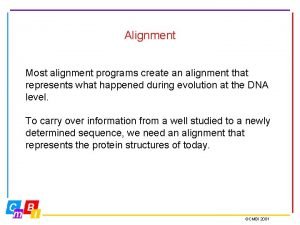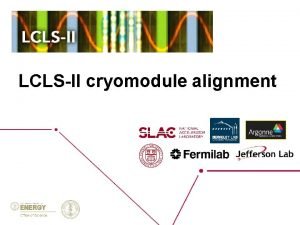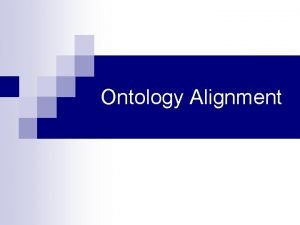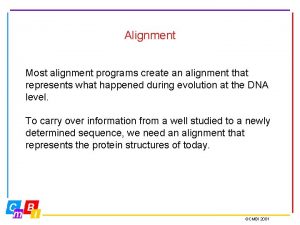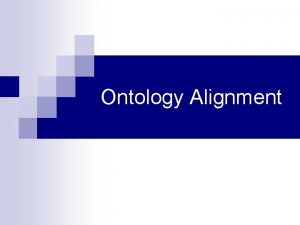Harmonisation and alignment guiding principles in practice Harmonisation










- Slides: 10

Harmonisation and alignment: guiding principles in practice Harmonisation, Decentralisation and Local Governance

Key question How to translate the DPWG-LGD’s Guiding Principles for Enhancing Alignment and Harmonisation on Local Governance and Decentralisation in daily practice?

Learning objectives Reflect on the relevance and feasibility of the guiding principles Identify possible approaches, mechanisms and good practices in promoting alignment/harmonisation Jointly define strategic and operational challenges ahead

Session Overview • Why is alignment and harmonisation important in Local Governance and Decentralisation? • Why is it difficult to apply the principles of alignment and harmonisation in LGD? • Panel discussion: What can we learn from practice? What are the key operational challenges for the future?

Why is alignment/harmonisation important? Relevance Paris/Accra Agenda for LGD (session 1. 1) Complexity of LGD Huge reform agenda requiring a ´system approach´ to implementation “No one can do the job alone” Cost of fragmented, uncoordinated, incoherent approaches

Opportunities for joint action Regular donor meetings Local working group on LGD, appointing a lead partner (or troika) on rotation Road-map at country-level including joint field missions for identification, monitoring, etc. Joint financing mechanisms (basket-funding, sector budget support…) Joint reviews in the case of budget support Joint capacity-building programmes at the level of central/ local government

Why is harmonisation/alignment difficult? • Generic constraints of the overall aid system • Constraints/tradeoffs in the DLG arena: • Limited national ownership –promoting LGD in hostile environments • Reliability of country systems • The need for `critical alignment` • Wide variety of possible LGD ‘lenses’ to provide support • Constraints linked to coordination with other support programmes (general budget support, SWAPs, civil society programmes, etc. )

Harmonisation & Alignment in Uganda Local Government Development Fund Decentralisation Development Partners Group Joint Assistance Strategy Joint Budget Support Framework Joint Assistance Framework (benchmark progress)

Panel discussion: rules Panel: 4 participants coming from different backgrounds (1 from HQ, 3 from various country contexts) 3 rounds of discussion around 3 core questions In each of these rounds, the panellists briefly comment on the question (3 minutes each) and there is time for Q&A

Discussion points • How to make it work in practice What approaches, mechanisms or instruments have helped to ensure alignment and harmonisation? • Looking beyond LGD How to ensure linkages and harmonisation with other support programmes? • Main challenges ahead?










